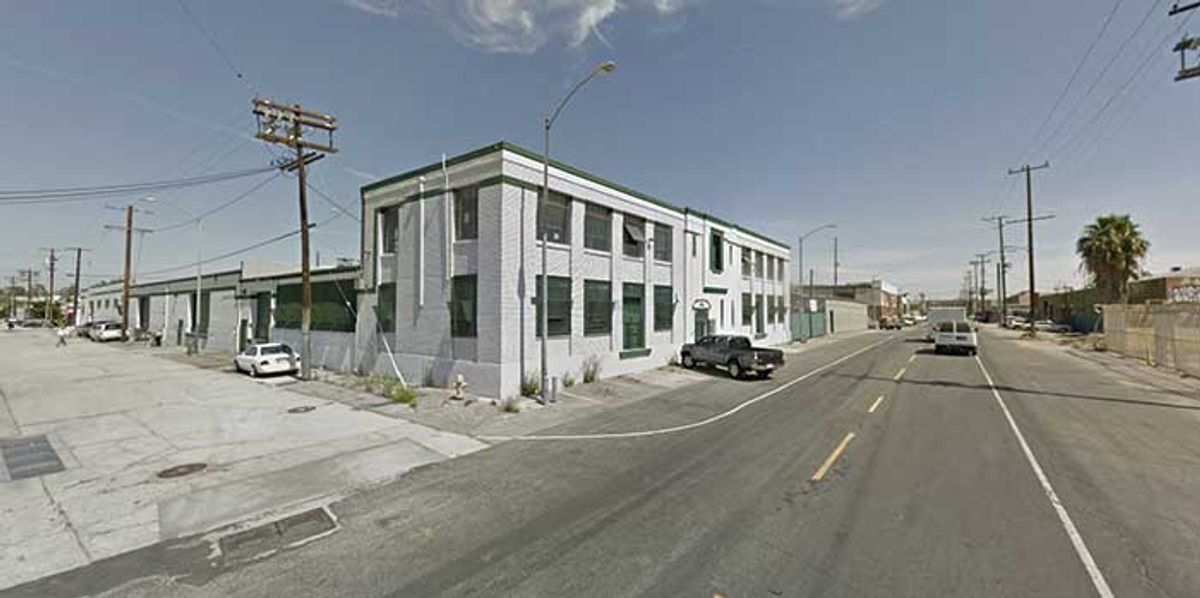For years, developers such as Eli Broad have been trying to create a serious arts district in downtown Los Angeles, along the so-called Grand Avenue Corridor, home to the Museum of Contemporary Art, Los Angeles (MoCA) and the Walt Disney Concert Hall. With The Broad Museum due to open in autumn 2015, the area stands to draw more visitors and investment. But in the meantime, the downtown art scene is already gaining significant momentum—only not where the big money predicted, but in odd pockets on the outskirts of the city.
Grice Bench, François Ghebaly Gallery and the Mistake Room have all opened within the past year, not far from Night Gallery, a pioneer in the south-of-downtown area that is still known for garment manufacturing. Further north, London’s Ibid Projects opened in September. All but the Mistake Room are commercial galleries.
Hauser Wirth & Schimmel is working to renovate a 100,000 sq. ft, seven-building complex that will include gallery space, a shop and restaurants. It is expected to open by the end of 2015. The huge complex is near the Box, run by Mara McCarthy, daughter of the artist Paul McCarthy. Both are part of the so-called “arts district” downtown—long “the home of poor artists”, according to the National Public Radio arts host John Rabe—and are closer to the Geffen Contemporary at MoCA in Little Tokyo than any Grand Avenue activity.
Meanwhile, the studio-turned-project-space opened last year by artist Laura Owens and her New York-based dealer Gavin Brown in Boyle Heights, east of the LA River, is attracting neighbours. The New York gallerist Michele Maccarone, already known as a geographical maverick for her willingness to set up shop on New York’s Lower East Side and then in its West Village, has just signed a lease for a 35,000 sq. ft space at 300 South Mission Road, a block from Brown and Owens. Built in 1926, the building has been used for a variety of manufacturing purposes.
As with so many New York gallery transplants, Maccarone says that her artists’ interest in Los Angeles drove her decision to branch out. She is giving her two Los Angeles-based artists, Alex Hubbard and Oscar Tuazon, studio space in the new building. “They’re both newcomers to the city and it’s really important that they have somewhere to hang their hat in Los Angeles,” she says.
Maccarone is no stranger to the city, having run the gallery MC in Culver City with Christian Haye until 2007. This time around, she was won over by the downtown architecture. “I really liked the flexibility of the warehouse,” she says. It is also true that Boyle Heights is significantly more affordable than, say, Culver City, arguably the epicentre of art galleries in Los Angeles for the past decade.
Commercial real-estate broker Dan Bernier—who ran a gallery in the 1990s, showing artists including Martin Kersels and George Stoll—says that downtown has the advantage of affordability and larger, industrial spaces. “My sense is that if you had $25,000 a month to spend, you could rent 8,000 sq. ft in Culver City where David Kordansky used to be, and maybe just a little more than that in Hollywood. Or you could rent 30,000 sq. ft near Gavin Brown. Or 25,000 sq. ft where Night Gallery is.”
Both Culver City and Hollywood suffer from competition with “creative office spaces” that also value the “concrete floor, bow-truss ceilings, high-volume” aesthetic, Bernier says. These design studios, internet firms and production companies are driving prices up.
That inspired François Ghebaly to consider downtown two years ago when he reached a limit with his cramped, albeit centrally located, gallery in Culver City. He now shares a 25,000 sq. ft space in a former truck-part manufacturing building with four other art ventures.
Downtown has the experimental feel of the arts strip in the city’s Chinatown area a decade ago, although a little more grown-up, Ghebaly says. “It’s like a 2.0 version of Chinatown; the spaces are bigger and maybe we’re running things more professionally.” The neighbourhood’s “rough-hewn” aesthetic attracted Grice Bench co-founders James Bae and Jon Pylypchuk. “We think it appeals to and challenges our artists,” Bae says.
Still, there remains a perennial Los Angeles question: will deep-pocketed collectors, many of whom live on the West Side, drive to these gritty locations downtown?
Last winter, the Mistake Room had no shortage of visitors to its inaugural show (an Oscar Murillo extravaganza), and nobody worries about interest in Christian Rosa, the current art-market darling, at Ibid—but it is harder to judge the draw of galleries with lesser-known artists. Bae’s take is that the most intrepid collectors—“the ones we care about the most”—will go wherever needed. He also reports that, since opening in April, his gallery turnout has “got much better; we now see two or three times more collectors per show”.
Besides, collectors have fewer excuses now that technology has made the sprawling city easier to navigate. As Bernier says: “It’s just not that hard. Collectors today can punch an address into their GPS, have their driver do it or request an Uber car.”
Women on top: galleries in Hollywood
Since Regen Projects moved in two years ago, Hollywood has become a can’t-miss gallery neighbourhood. It has also become, Michael Kohn aside, a mecca for female-run art galleries on the West Coast. The current line-up includes Shaun Regen, Erica Redling, Overduin and Kite, Diane Rosenstein, Hannah Hoffman, Sarah Gavlak and Esther Kim Varet. Meanwhile, Lauri Firstenberg of Laxart has announced plans to move her non-profit organisation from Culver City to Hollywood by early 2015.


